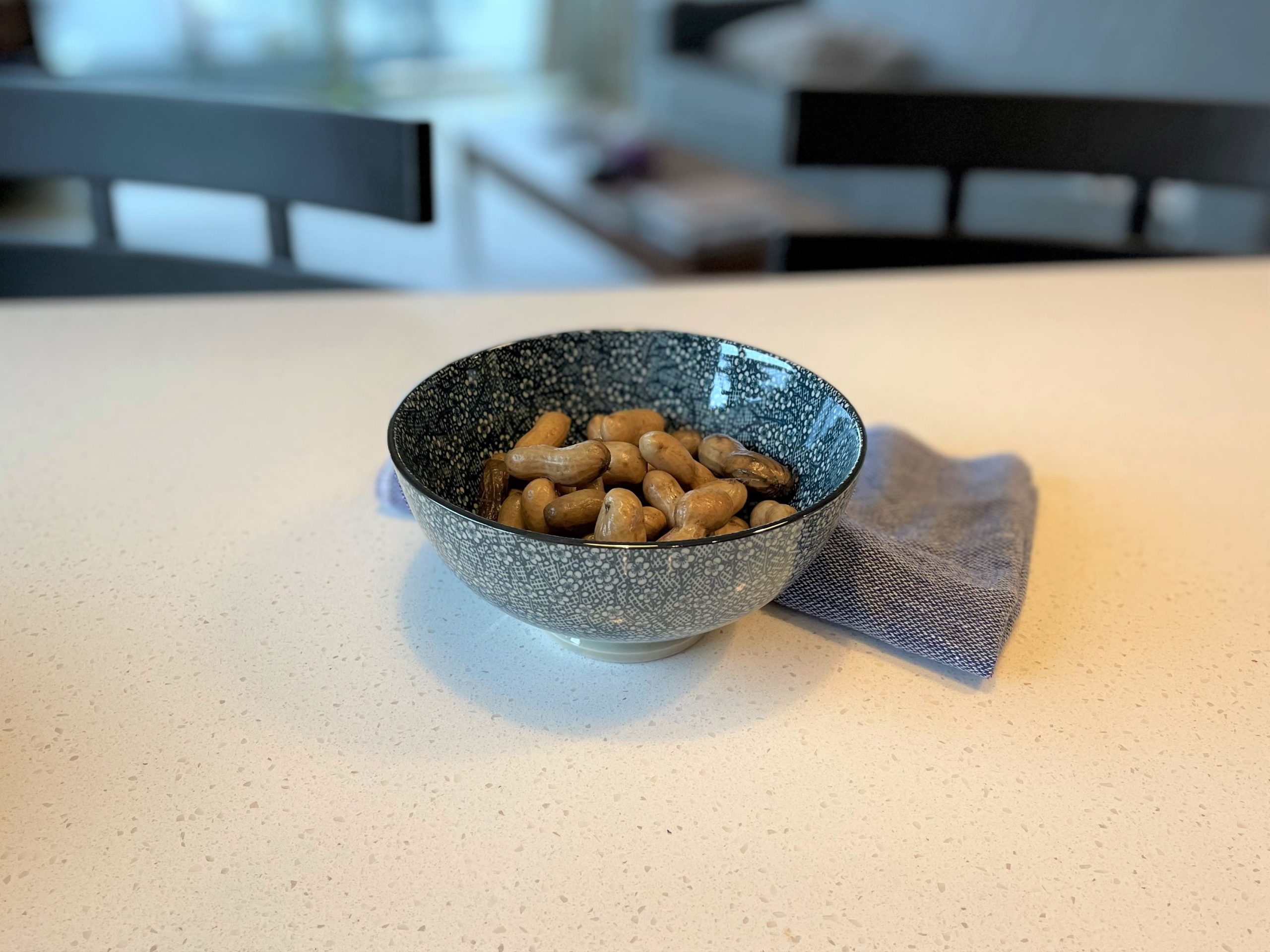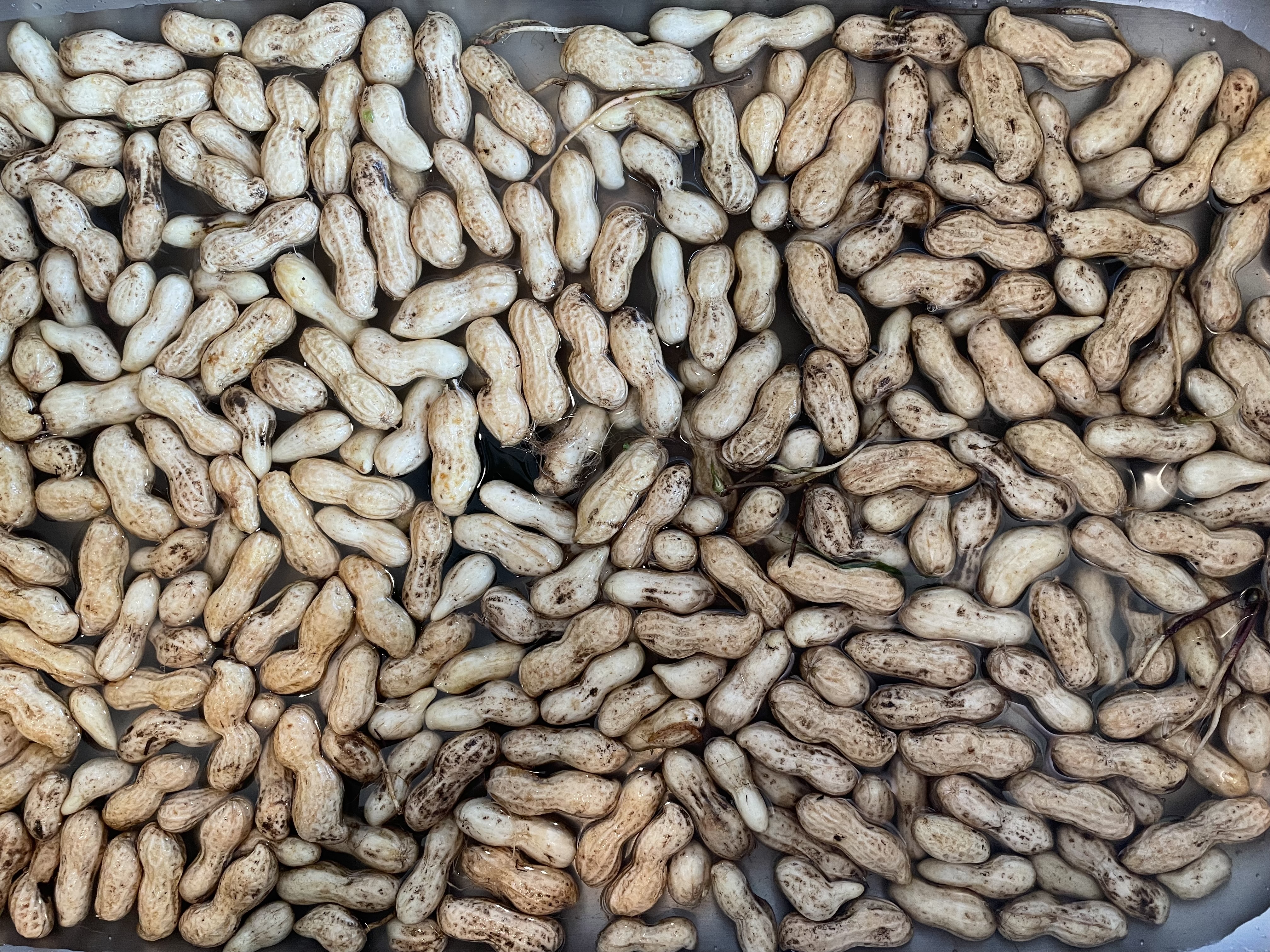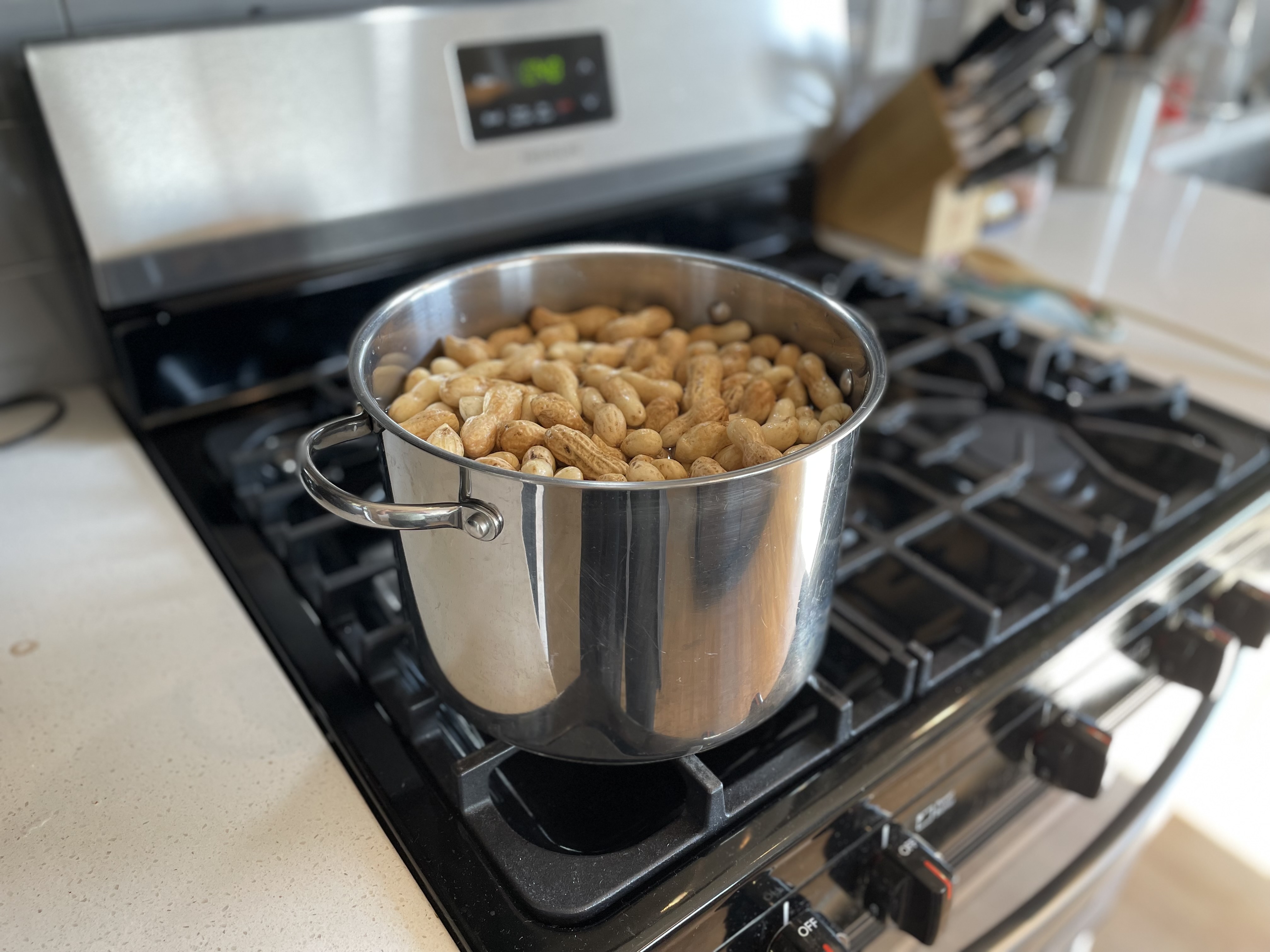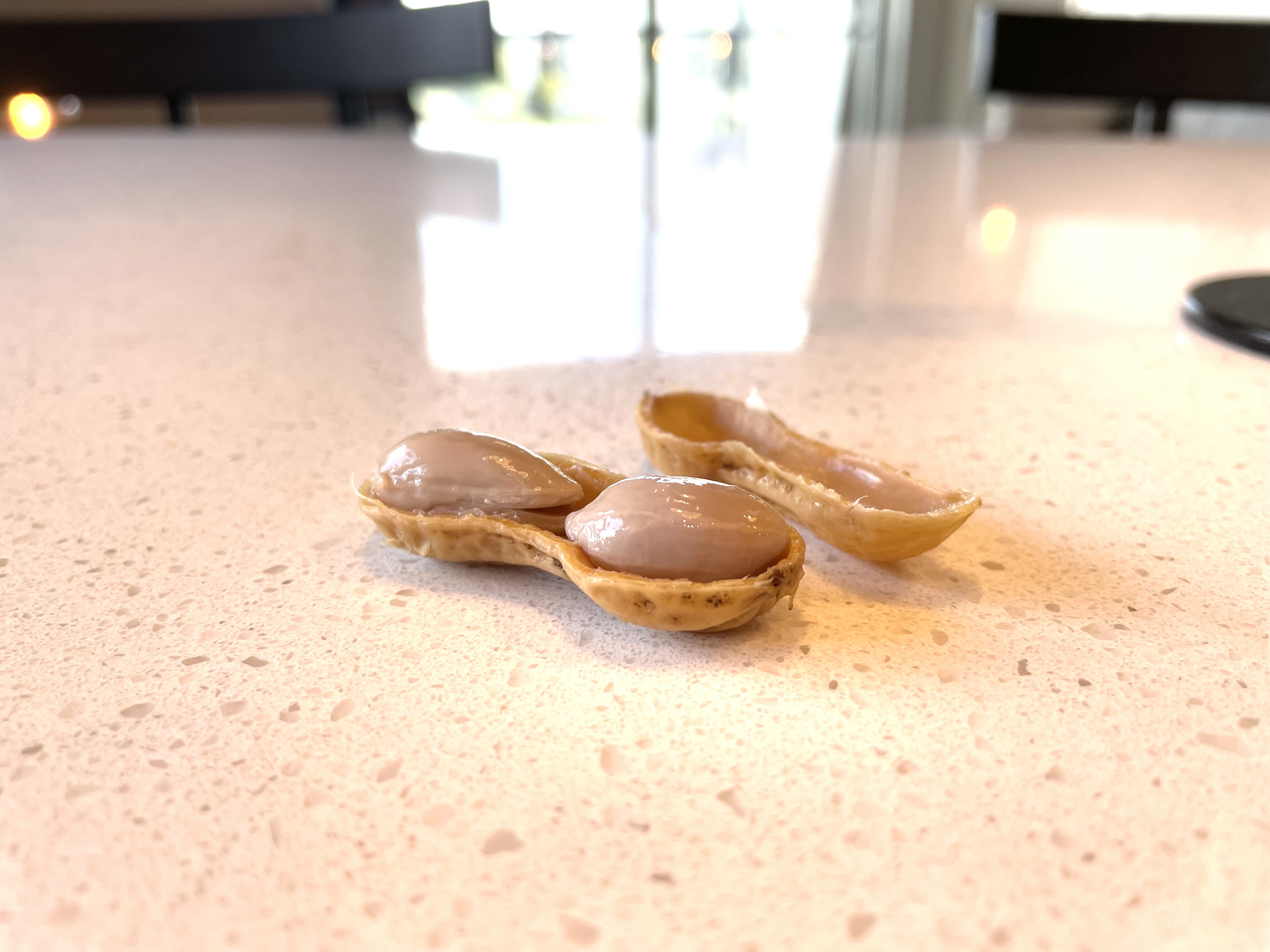
Boiled Peanuts
If there’s any food in my life that really embodies that old cliché, “You don’t know what you’ve got until it’s gone,” it’s boiled peanuts. These things are everywhere in the Deep South. You can buy them at gas stations, roadside produce markets, the concession stand at the ballpark, or if you’re really in a pinch, at the grocery store, in a can. I always loved boiled peanuts and would gladly eat them whenever they were available, but I never really bothered to seek them out on my own while I was living in Alabama. It wasn’t until I was a thousand miles away in Boston and feeling homesick for the South that I started to crave them, and in New England, no one had ever even heard of boiled peanuts, much less sold them. My usual solution when I find myself craving a food that I can’t buy is to make it myself, but boiled peanuts must be made with freshly picked, raw (or “green”) peanuts, which were also unavailable in New England, so I had no choice but to pine for them until I could procure some on family visits.
So, imagine my delight when I stepped off the bus in downtown Minneapolis one morning in the fall of 2019 and found myself smack-dab in the middle of the Nicollet Mall farmers market, staring directly at a booth selling raw peanuts. I decided that stopping to buy the peanuts would be well worth the risk of arriving late to work.
It’s still not exactly easy to find raw peanuts in Minneapolis—I never saw any last year, despite visiting the farmers market nearly every week—but when I do find them now, they’re an automatic buy. I was lucky enough to acquire some a couple weekends ago, and let me tell you, they did not disappoint.

I ended up bringing home about four pounds of peanuts, which, as all fresh ones should be, were pretty dirty. I cleaned them by filling the kitchen sink (which I cleaned first!) with cold water, and swishing the peanuts around in the water to release the dirt. I changed the water and repeated the process a few times until the water stopped looking dirty. And then I broke out the biggest stock pot I own:

A good rule of thumb for salting the cooking water is to use half a cup of salt per gallon of water. It took almost exactly a gallon to cover the peanuts by two inches, so that made my calculations very easy.
Cook times vary for boiled peanuts, depending on how fresh they are; really fresh peanuts will still hold a decent amount of moisture and won’t need to be cooked as long. My batch took about two hours, all told. (I should warn you here that starting with dry peanuts and cooking for longer doesn’t produce good results—before I found the farmers market peanuts, I tried buying some online and was sorely disappointed with the results.)
My two favorite things about boiled peanuts are the way they make the house smell while you cook them (like fresh earth, sort of like the outside of a baked potato), and teaching newbies how to eat them. Here’s the trick. Each peanut shell has a rounded end and a pointier end; the pointy end has a noticeable seam. Align that seam perpendicular to your teeth, and bite down to break the seam a little. Slurp out the brine inside the shell (yeah, the slurping sound is unavoidable; no one said eating boiled peanuts was elegant), then use your hands to pop the shell open and expose the peanuts. Voila!

Happy fall, everyone! If you see raw peanuts at the farmers market– grab ’em!
Boiled Peanuts
about 4 pounds fresh raw peanuts
1 gallon water
1/2 cup kosher salt
Wash the peanuts by soaking them in a sinkful of cold water, swishing them around to knock off the dirt. Change the water as many times as necessary until the peanuts are no longer releasing dirt and the water looks clean. (The peanuts probably won’t look totally clean– that’s fine.)
Place clean peanuts in a large stockpot, then cover with water by 2 inches. (Measure the water as you fill the pot so you know how much you’ve used.) Add 1/2 cup of salt for every gallon of water used. Stir well.
Bring the water to a boil. Once boiling, reduce the heat to medium and cover the pot. Check the peanuts after about an hour; adjust salt as needed. When the peanuts are tender, turn off the heat and let soak in the brine for at least 30 minutes (they will continue to soften as they soak).
